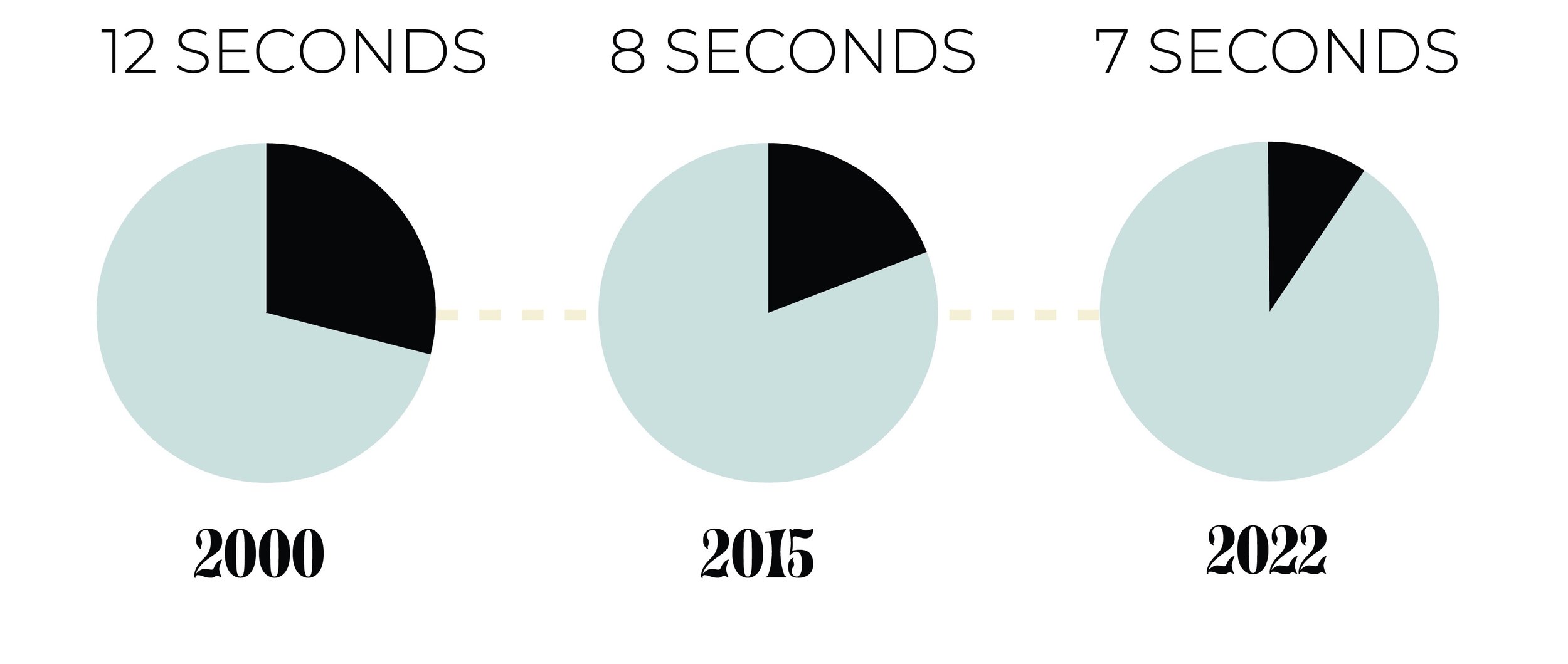INBOUND MARKETING 101: GET FOUND ONLINE BY YOUR TARGET CUSTOMERS
Traditional buying and selling tactics have changed thanks to the internet, social media, and search engines. Instead of going into stores, people search for solutions online. Consumers spend time researching, reading reviews, and looking at social media posts before talking to a salesperson. For sales and marketing teams, this means old strategies of reaching out to leads and driving revenue no longer measure up.
To reach today’s buyers, successful brands use inbound marketing to find new web visitors, convert them into leads, and nurture them through the buyer’s journey. Why does inbound marketing work better than outbound marketing?
Why Inbound over outbound?
The average American consumes 100,000 words, or about 34 gigabytes of information, every day, according to a new report. As a nation, that's 3.6 million gigabytes of info.
Between social media, our email inbox, and notifications, we are constantly bombarded with advertisements and people trying to sell to us. The constant email blasts, advertisements and social media influencers make it harder to grab the attention of buyers today.
A study by Microsoft found that the human attention space has dropped to 7 seconds – a shrink of nearly 25% in the last few years. For brands and content creators, this means that we need to do an even better job of capturing the attention of our audience.
What is Inbound marketing?
Inbound marketing is all about building a website that attracts your ideal prospects as they progress through the buyer's journey. Once prospects visit your site, you continue to engage them with valuable content that shows them a solution to their primary problem statement. Finally, inbound marketing delights visitors as you gain their trust and become a trusted advisor through thought leadership content like blogs, white papers, and case studies.
Here’s a breakdown of each stage of inbound marketing:
Attract: Using organic search and social media tactics, you attract users to your website who are searching for your unique solution.
Engage: Once a contact fills out a form on your website (web conversion), you nurture this lead with content to take them through the buyers’ journey. After interacting with your brand, a contact decides to buy your product or solution.
Delight: You delight your customer by fixing their problem with your unique solution. This inspires loyalty and your customer becomes a promoter of your brand to their network.
HubSpot uses this flywheel to help visualize the inbound marketing journey.
Unlike outbound marketing, inbound marketing doesn't need to fight or compete for potential customers’ attention. By creating strategic content that addresses customer pain points while offering a solution, you attract qualified leads and build trust and credibility for your brand.
Here’s a breakdown of the buyers’ journey stages detailed above.
Awareness: Your target customer has a pain point. They search for a solution on Google. They find a blog post from your company that details the problem they are having and offers a solution. They interact with your website and download an ebook that shows them a solution to their pain point.
Consideration: During the consideration phase, a target customer interacts with your brand further and is nurtured with content catered to their pain points. You send them newsletters and nurture emails to move them along to the next stage of the buyer’s journey.
Purchase: After interacting with your content, your target customer schedules a sales call. You send them a proposal and quote. Your target customer signs your proposal because your content has built trust.
Loyalty: As a customer works with your brand, you inspire loyalty from them. They give reviews and testimonials. Your client also refers friends and colleagues to you. Your customer continues to make purchases and spread the word about your great work.
The goal of inbound marketing is to attract potential buyers to your website, engage them with content, and continue to delight them.
building an inbound marketing foundation
You can’t build an inbound marketing program overnight. You must start by creating your marketing foundation. Start with creating a business and marketing plan that is strategically coordinated to reach your target audience. Your brand identity and messaging are foundational components of any inbound marketing plan. Be sure to ensure your brand positioning and messaging capture your unique differentiators and clearly showcases how you solve pain points for your target audience.
Another key foundation of any inbound marketing approach is having a website that is well-designed, organized, and provides resources catered to your target audience. Start by creating a website that showcases your products, services, industries, and unique selling features. Once your website is live, focus on building content like blog posts, landing pages, case studies, infographics, videos, and more to help nurture contacts through the buyers’ journey.
An inbound marketing strategy relies on different channels to engage your audience. Here’s what your inbound marketing strategy should entail:
Website strategy
Buyer personas
Marketing automation and workflows
Content creation
Landing pages and forms
Lead magnets (white papers, ebooks, webinars)
Videos
Social media
Lead nurturing
SEO
CRM
Marketing analytics
Your marketing plan should be focused around inbound marketing strategies to fully engage your target personas. Content marketing and marketing automation are key to nurturing your audience. HubSpot’s platform allows for marketing teams to build full inbound marketing strategies that house your website, email automation, CRM, deals, analytics, social media metrics, and support tickets. HubSpot also allows marketing teams to personalize communications and segment audiences based on content preferences. Learn more about HubSpot by clicking the button below.



